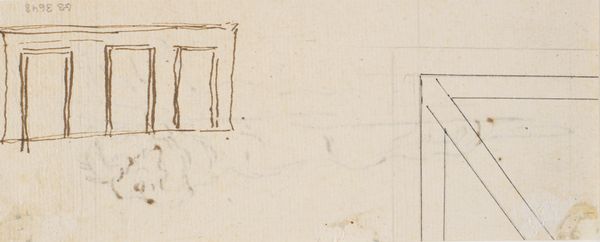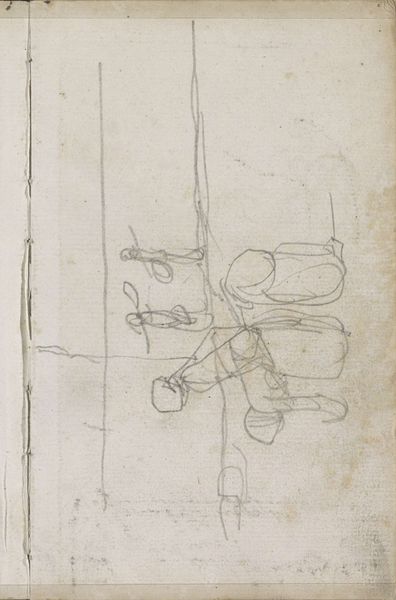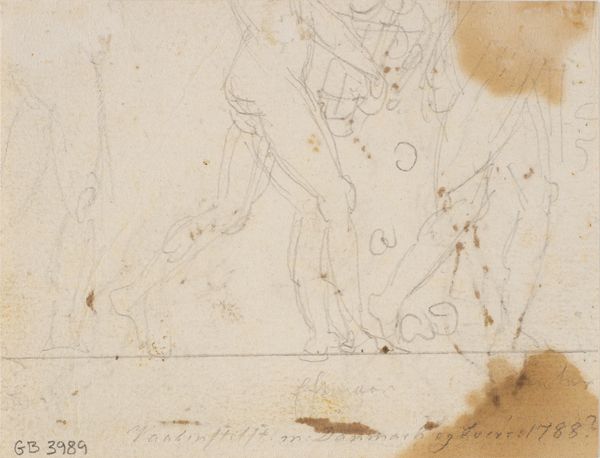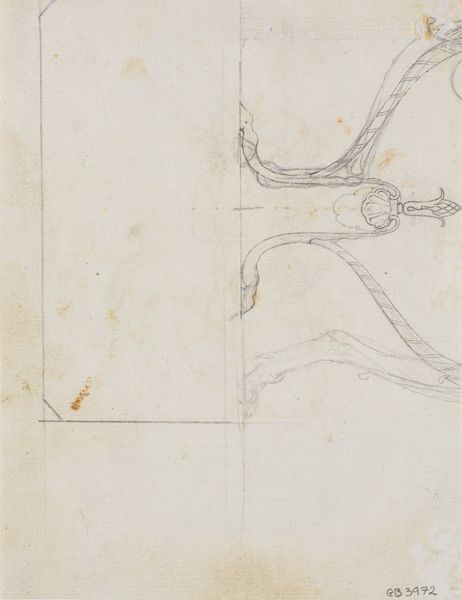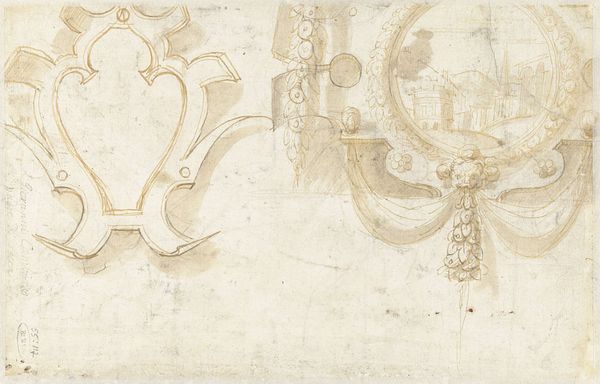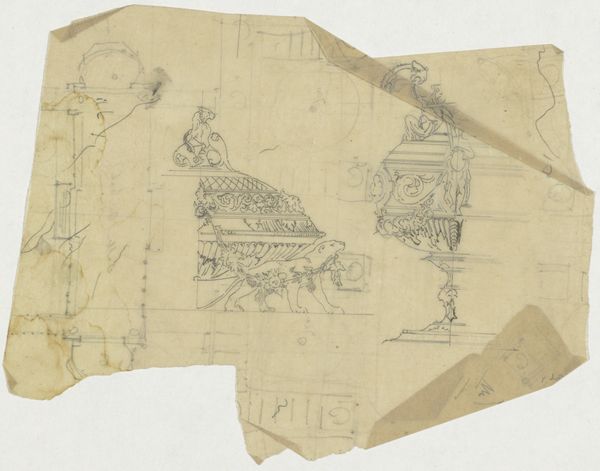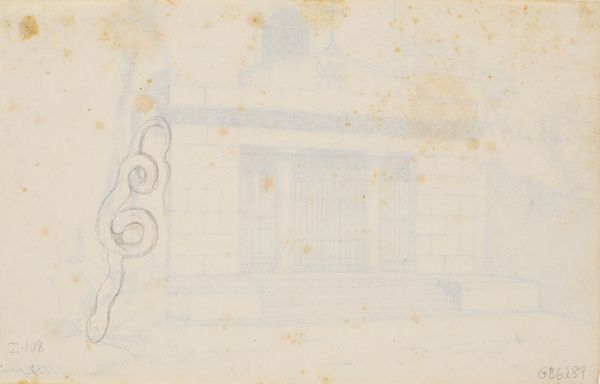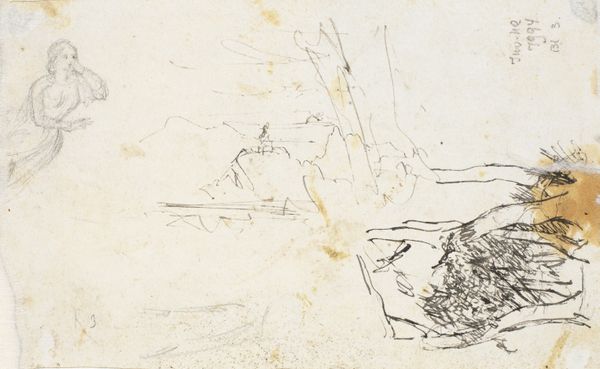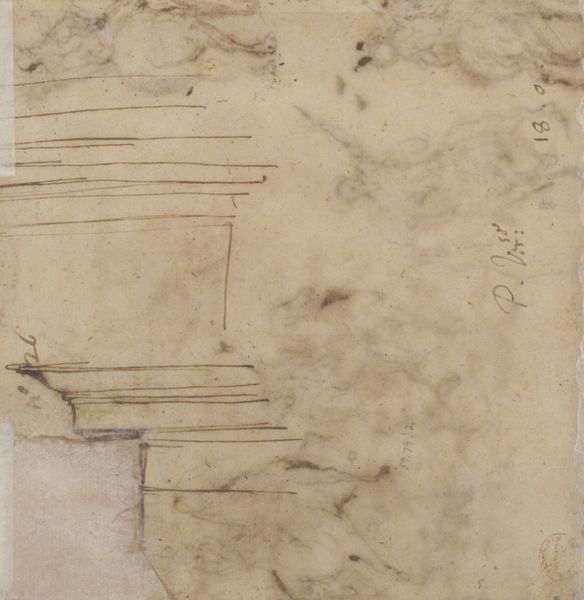
Fragment af udkast til tronstolen i audiensgemakket 1743 - 1809
0:00
0:00
drawing
#
drawing
#
neoclacissism
#
form
#
line
Dimensions: 68 mm (height) x 217 mm (width) (bladmaal)
Curator: Here we have Nicolai Abildgaard’s “Fragment of a Draft for the Throne Chair in the Audience Chamber," sketched between 1743 and 1809. Editor: My first impression is how ghostly it appears. Like a vision from another time, with those pale lines barely clinging to the aged paper. It makes you consider ideas of authority and the past, simultaneously. Curator: Absolutely. The draft shows a strong neoclassical style, which was rooted in the artistic and intellectual ideals of that period. Thrones as symbols of absolute rule have a lineage reaching way back, what connections do you discern? Editor: What jumps out is how cold it seems, really, despite its grand intentions. There’s something inherently alienating in such formal design, right? Especially given what a throne actually represents; entrenched hierarchies of wealth, control… It seems like such structures are starting to crumble under the weight of global pressures. Curator: But aren't symbols, like the throne itself, powerful tools for reinforcing cultural values? If we strip them of meaning, what remains? Think of the semiotics of power – how do you understand Abildgaard’s attempt to express authority visually? Is the throne inherently, irrevocably oppressive? Editor: I’d argue that symbols of power demand interrogation, never passive acceptance. But to be fair, this IS a sketch, an ephemeral moment in design. Maybe Abildgaard was aiming to project something more complicated? I would say there is possibility, but it takes collective action, rewriting these entrenched systems, and rethinking how they are sustained. Curator: You're pushing us to consider how we reimagine leadership. It certainly makes you wonder how these icons evolve, their symbolic language adapting to societal transformations. The symbolism we create and what is created for us—the drawing certainly speaks to the tension there. Editor: Well, precisely. So while this sketch might be “just” a throne, it serves as an opening—not only into understanding the artistic process, but in asking tough questions about power and legacy. A beginning, rather than an end.
Comments
No comments
Be the first to comment and join the conversation on the ultimate creative platform.
